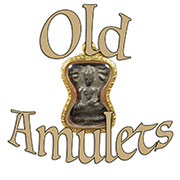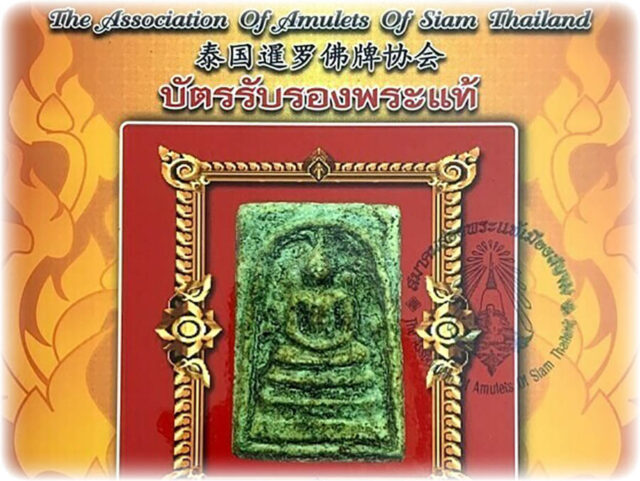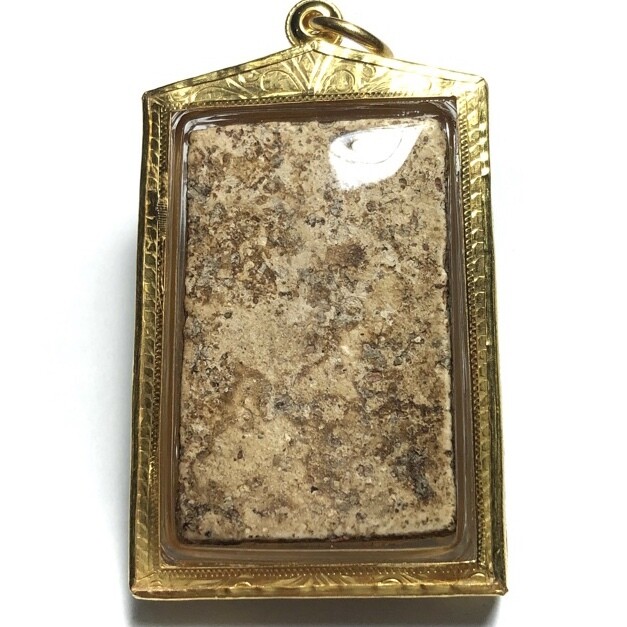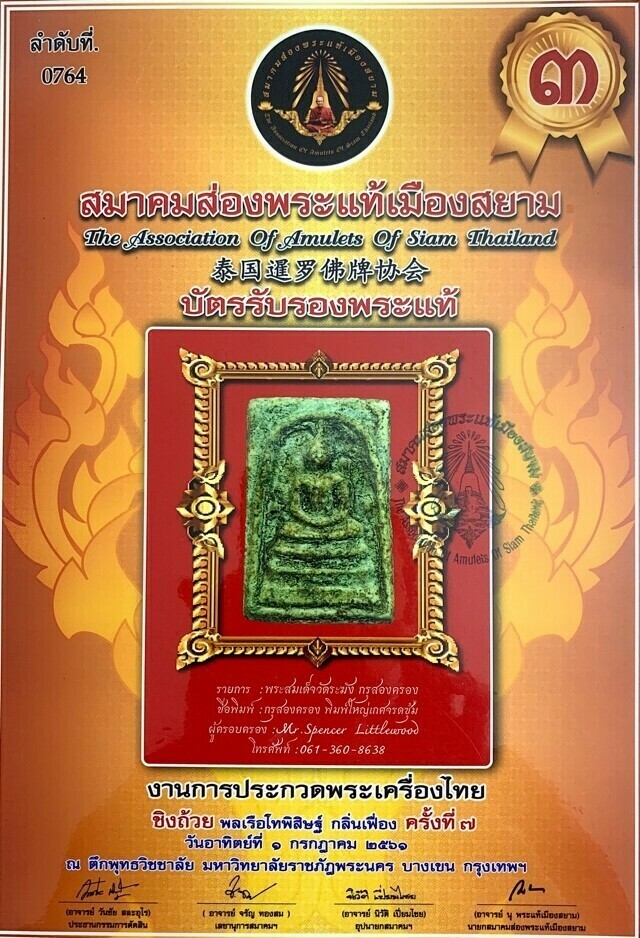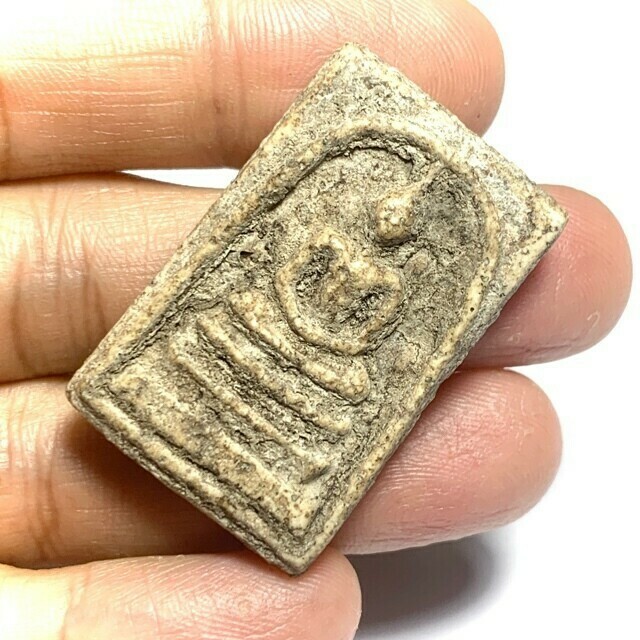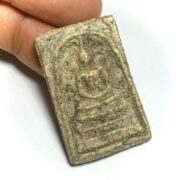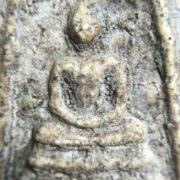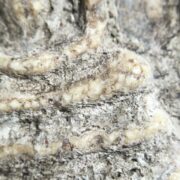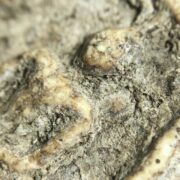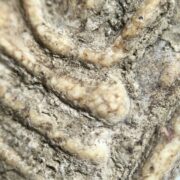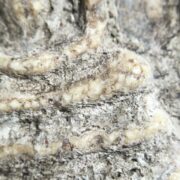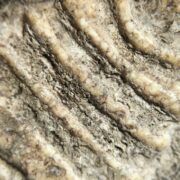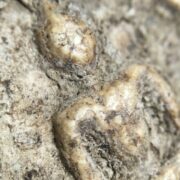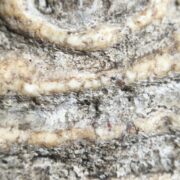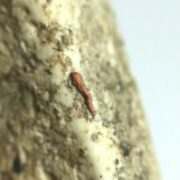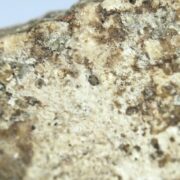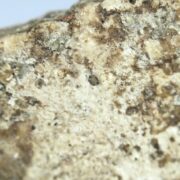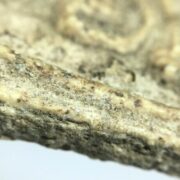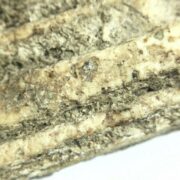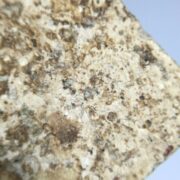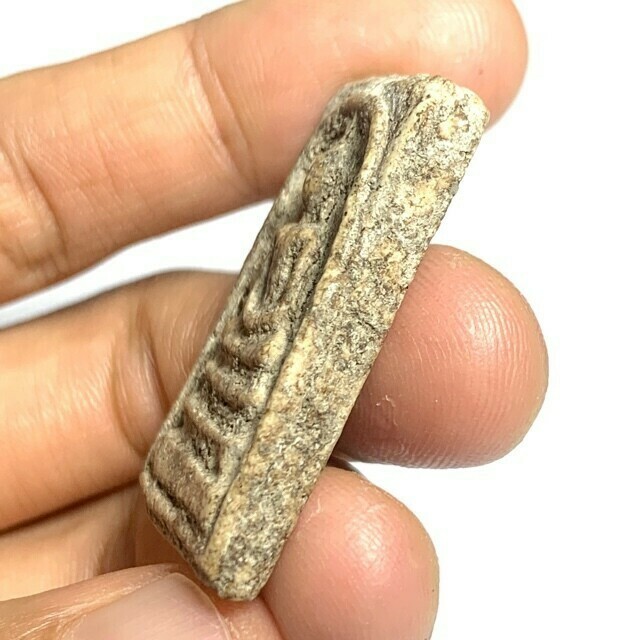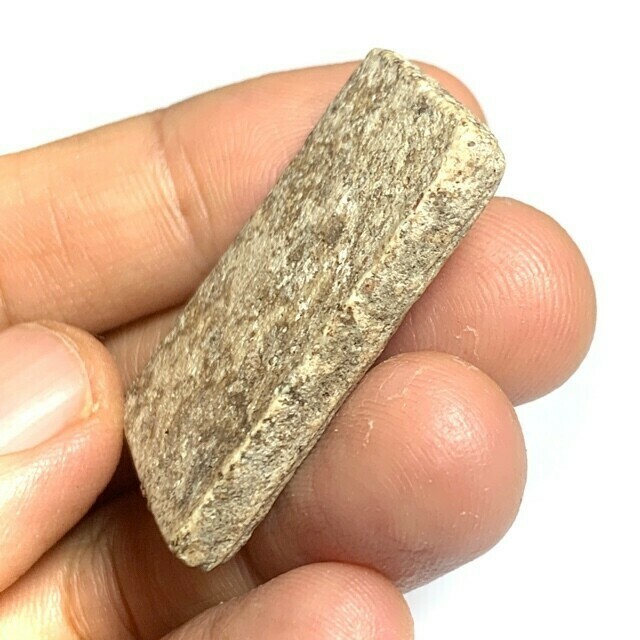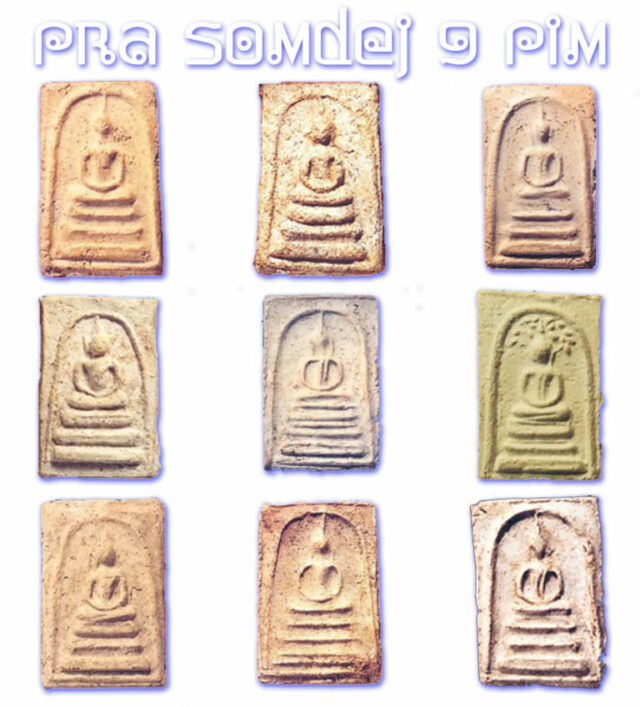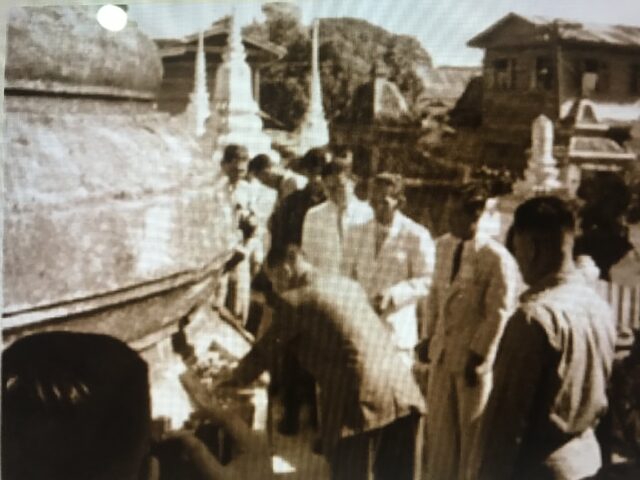Presenting a 3rd Prize winning Competition Standard Master-Class old amulett of the Benjapakee Immortal Classic Family, the Phra Somdej Wat Bang Khun Prohm, Pim Yai Classic and one of the most famous Thai Buddhist Amulets of all time, as well as being among the top preferred amulets of the serious devotee and wealthy collector of the accepted amulets of Somdej Phra Puttajarn (Toh) Prohmrangsri, of Wat Rakang Kositaram, whose Phra Somdej are the number one amulets in the history of Thai Buddhist Amulet making. The final and world famous Phra Somdej of LP Toh, which was hidden and Buried in the Chedi Stupa of Wat Bang Khun Prohm in 2413 BE, a couple of years before Somdej Toh’s passing, (2415 BE) 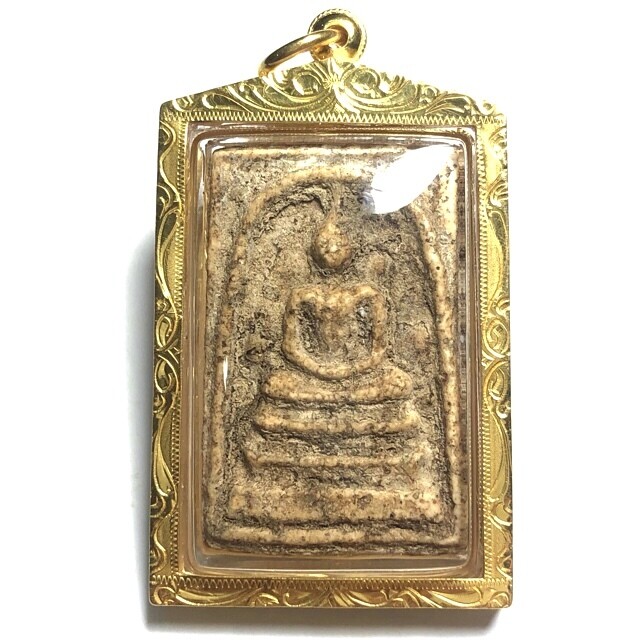
His Phra Somdej amulets are world class number one status, be they from Wat Rakang, Wat Bang Khun Prohm,or Wat Gaes Chaiyo. In fact, if it were not for Somdej Toh, the Phra Somdej amulet in general, made by other temples and masters, would ;probably not be the best known amulet type that it is today. The amulets were made in the period between 2408-2411 and finished in 2413 BE, before the passing of Somdej Toh himself, who died in 2515 BE.
The amulets were blessed and buried in the Chedi Stupa around the year 2413 Buddhist Era (BE), until their distribution in 2500 BE, after the opening of the hiding chamber within the Chedi Stupa at Wat Bang Khun Prohm.
This amulet comes with its third prize winning A4 size certificate of the Chomrom Phra Tae Mueang Siam Amulet Appreciation society and complimentary box with 3rd prize ribbon sticker.
We offer free Waterproof Solid Gold Casing with this amulet. Free EMS/DHL/Fedex Shipping is also included in the price (depending on which service is available at the time).
The surface of the amulet shows the presence of all the classic features and muan sarn sacred powder ingredients of a true Phra Somdej Bang Khun Prohm of Somdej Toh, with Kraap Kru on the front face revealing it to have been placed within the Sorng Klong Kru Mai Chedi Stupa. The Kru Gao (Chedi Yai) amulets of the 2500 BE Opening are more highly preferred than the Kru Hmai (small Chedis) amulets, which were found later within the nine smaller Chedi Stupas surrounding the main central Stupa.
Hence, the Kru Song Klong series of the Kru Mai Chedi Mai/Chedi Lek, are slightly more affordable, despite being equally aged, powerful and authentic, and from the same ceremony. The Phra Somdej Wat Bang Khun Prohm amulets of Somdej Toh, are highly revered among various groups of aficionados, who believe that there are doubly powerful.
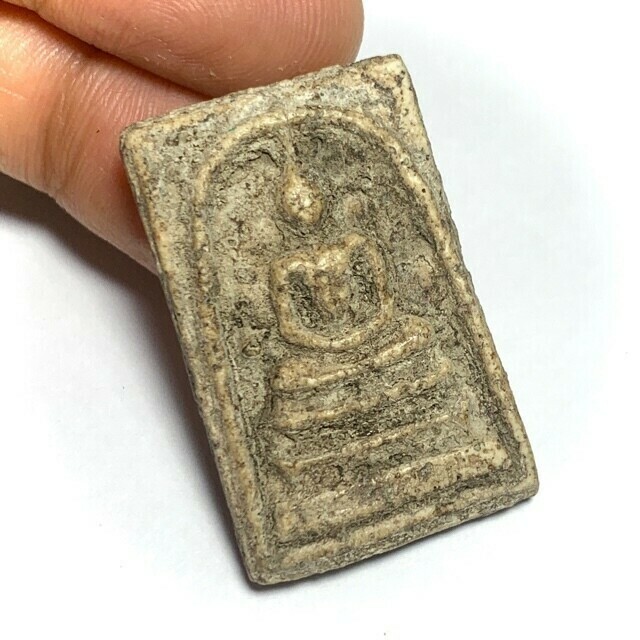
This is because they believe that Somdej Phra Puttajarn (Toh) Prohmrangsri, blessed the amulets in both the Wat Rakang, and Wat Bang Khun Prohm Ceremonies, meaning a double blessing, which cannot be said for Phra Somdej Wat Rakang.
This can be true, unless you assume that 1st era Somdej Wat Rakang left over, were reblessed during release of second era, and again some remaining first era amulets, blessed again with the making of the third era of Phra Somdej made by Somdej Toh).
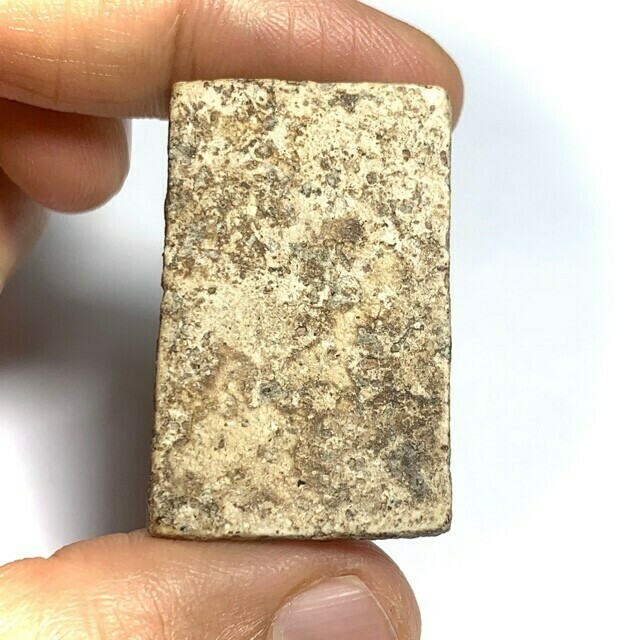
In such a case, this would mean that some first era Phra Somdej Wat Rakang were blessed three times, because they were not yet distributed and part of the remaining batch of first era.
And, it is assumed, that if so, such exhibits, if also placed in the Wat Bang Khun Prohm hiding place chamber, would then have received a total of 4 blessings for 1st era, 3 blessings for second era, and 2 blessings for the final era of Phra Somdej Wat Rakang, all eras are assumed to have been placed within the kru, which accounts for the differing age of some exhibits, which look much older than others, despite the same Muan Sarn ingredients and found in the same Kru Chedi Stupa.
This is due to the time span between the three eras when Somdej Toh made Phra Somdej, and is why some of his Somdej amulets look much much older than others.
Phra Somdej Bang Khun Prohm is one of the classic Phra Somdej amulets available and is along with Phra Somdej Wat Gaes Chaiyo perhaps the next in line to the Phra Somdej Wat Rakang amulet as far as popularity, beauty, sacredness of Puttapisek ceremony and price range.
Phra Somdej Bang Khun Prohm Kru Phra Chedi Yai (Large Chedi Kru amulets) The Phra Somdej Bang Khun Prohm amulets classified as a Kru Phra Chedi Yai, have 9 different Pim Song, and were made in the period between 2408 – 2411 and placed into the Kru Chamber for charging with power and keeping until a later date, in the year 2413 BE.
Not all of the Phra Somdej Bang Khun Prohm were placed in the Kru, it took many years to create and press them and many would be in a receptacle in the Kuti, and would be handed out by him during the time he created and empowered them at Wat Rakang, which is why some amulets do not have Kraap Kru mildew, and are considered Wat Rakang.
He handed out Phra Somdej to devotees constantly during the years the third and final era amulets were being made, and also, many of the Phra Somdej that he made during the two officially documented 1st and second era amulets remaining at the temple, were added to the chamber at Wat Bang Khun Prohm (he released before that but was undocumented, so it should not be assumed that only three eras exist, merely because that is the only documented evidence)
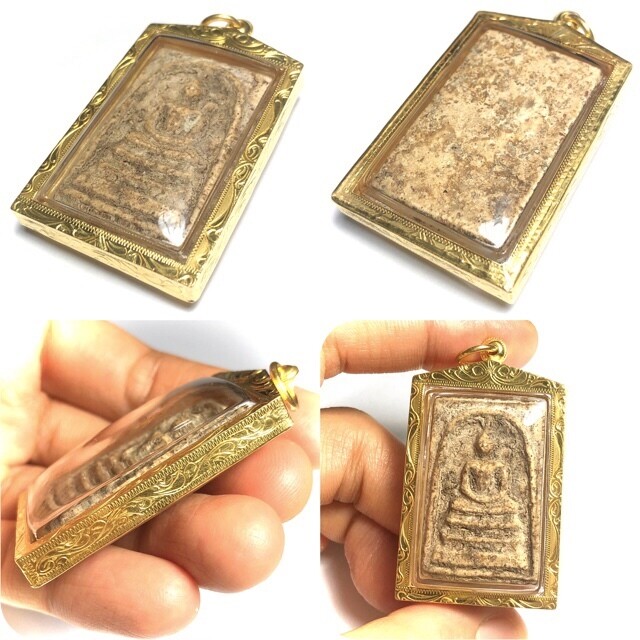
This explains the absence of Kraap Kru in some exhibits, as well as being purely logical and the most probable chain of events to have occurred. The Apart from Pim Yasi and Pim Chedi, the Pim Thaan Saem is one of the 5 Pim Song of Phra Somdej, which exist in both the Kru Wat Rakang and Kru Bang Khun Prohm amulets. Phra Somdej Wat Rakang have Five major category of Pim Song, whereas the Phra Somdej has four more Pim Song, making it nine major Pim in all.
The amulets from the Small Chedis had a lot of lesser numbers of unusual models, called ‘Pim Plaek’ (strange models), which are strangely enough cheaper than the more common models, simply because the major associations were too lazy to allow a large number of different categories of models.
This is because these so called ‘professional experts and conservationists’ (who fail to conserve true knowledge), preferred to focus on a simple set of the best known models. This led to the false belief and denial of authenticity of many models at first, until Royal Documentation and other evidence emerged to prove that there were many other models and designs found i the Kru Mai smaller chambers, such as the Saiyasana Buddha, the Pim Tukadta, and even Somdej Gaes Chaiyo, Ruesi images and other lesser known about varied designs of Phra Somdej, such as some with long ears, others with angled ears, some with Garuda chest others with a tubular chest etc.
These 9 Pim are; Pim Yai, Pim Sangkati, Pim Song Chedi, Pim Prok Po, Pim Gaes Bua Dtum, Pim Thaan Koo, Pim Sen Dai, Pim Ok Krut.
However, there are many more in truth, which our proprietor Ajarn Spencer is constantly publishing more and more knowledge about, in order to open up the truth and reveal the true way of rthinking and understanding about how Somdej Toh made his amulets, and how many of theem have been concealed or overlooked until the age of internet and social networking allowed information to flow more freely, between students of Phra Somdej, and those in the know.
History records that, in the year of the Dragon 2411 BE, Samian Tra Duang Tongoses, made restoration work at Wat Bang Khun Prohm Nai (Wat Mai Amataros), and renewed the temple, along with the building of a new Chedi Stupa, in order to place Phra Somdej amulets, which Samian Tra Duang invited Jao Phrakhun Somdej Phra Puttajarn (Toh) Prohmrangsri, of Wat Rakang Kositaram to place there, as well as to empower. The amulets were made in the Phra Somdej Traditional formula of 84,000 pieces (same as the number of suttas of the Phra Tammakhant).
After Somdej Toh had blessed and empowered them, Samian Tra Duang was allowed to place then in the Kru hiding place within the Chedi Stupa behind the Upopsadha shrine room. During the time from then, the Chedi was sometimes accessed and amulets were removed from time to time, and even some thieves dug holes and stole some.
This became so bothersome, that the Kru had to be broken open officially on 24th November in 2500 BE.
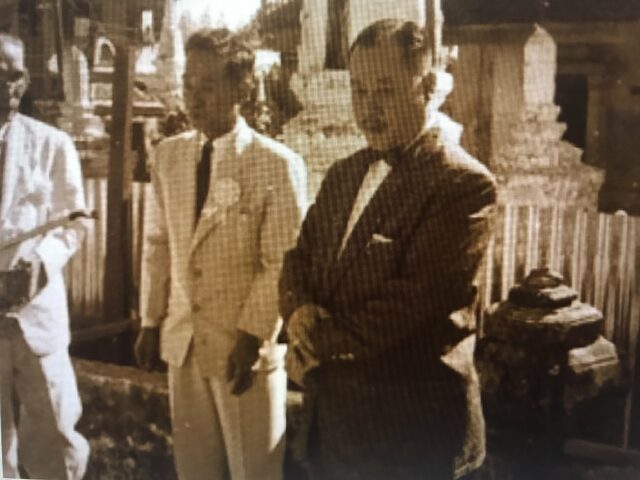
The opening took all day, until at approximately 8pm, the very last Phra Somdej amulets were removed. Many of them were very thickly coated with ‘Kraap Kru’ (residues and growths). The amulets were allowed to be rented out by devotees, until the year 2509. The total amount of money raised from the rental of these amulets amounted to about 4 Million Thai Baht.
This money was used to construct the new Uposadha shrineroom, and the renovate and restore the old Chedi Stupa, as well as making a bronze statue of Tan Jao Phrakhun Somdej Toh, which was completed and celebrated in 2509 at the same time as celebrating the building of the Putta Sima (temple walls), and the burial of the ‘Look Nimit’ (all Uposadha shrine rooms must have a Look Nimit ball buried under it).
The depletion of this series led to the creation of yet another immortal legend of the Phra Somdej Niche in 2509, namely the Phra Somdej Wat Bang Khun Prohm 09 Edition, which is in itself one of the most highly collected amulets of serious collectors and devotees, and also carry relatively elevated prices.
This Classic edition of Somdej Bang Khun Prohm, are considered to have extremely powerful Buddha magic in them due to the richness of sacred powders and powerful blessings contained within from great master Somdej Toh Prohmrangsi, who was indeed the Grandon of King Rama 1, and is among the top prestigious amulets on the planet. The Phra Somdej Wat Bang Khun Prohm, is usually completely impossible to find in this era, and also usually priced in the Pantip & Tha Phrachan Showrooms at many times the price we charge, for we base our prices on what we paid for the item, not how much we can sell it for.
